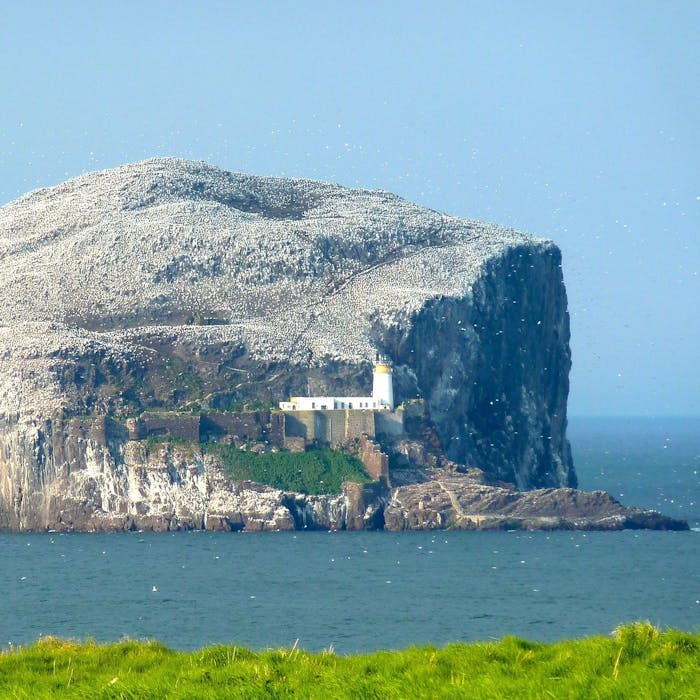
Bass Rock, southern Scotland - an avian fortress
Bass Rock is an island in the outer part of the Firth of Forth off the east side Scotland, three miles north-east of North Berwick. It has become a paradise for seabirds and is thought to have the largest colony of gannets in the world.
Upon first glimpse, the Bass Rock, resembles a white iceberg floating in the Firth of Forth. It is actually dark volcanic rock, but during much of the year it is dusted with white from bird droppings and thousands of white seabirds.
Described by Sir David Attenborough as ‘one of the 12 wildlife wonders of the world’, the Bass Rock is a sanctuary for gannets, hosting over 150,000 of them during peak breeding season. Not only is it the closest bird sanctuary to the mainland, but it also saw the first ornithologists, who gave the gannet the scientific term Sula Bassana or Morus Bassanus in honour of this small island.
Surprisingly, for such a steep barren-looking spot, Bass Rock has had a long history of human habitation - albeit intermittent.
The island was a retreat for early Christian hermits; St Baldred is said to have lived there around 600 AD.
The earliest owners of the island were a family called Lauder of the Bass. According to legend, they received the island as a gift from King Malcolm III of Scotland. The crest on their heraldic arms is, appropriately, a gannet sitting upon a rock.
The family had a castle on the island from an early date. A royal prince (the future James I of Scotland) was taken here for safety once when the royal family were under threat. Later, King James IV and King James VI were entertained at this castle, and James VI liked it so much he wanted to buy the island.
Later, in 1671, the castle became a notorious gaol for political prisoners. At one stage four Jacobite prisoners managed to take over the prison and held out against government forces for nearly three years - raiding the coastline with back-up from the French. They were joined by other Jacobite sympathisers and were aided by the exiled King James II (whose throne had been taken by his daughter Mary and her husband William).
This interlude came to an end when the rebels accepted very generous surrender terms of freedom and passage to a new life in France.
There was a well at the top of the island providing water for the inhabitants, and at one stage there were 100 sheep grazing here as well. There was also a chapel going back to the medieval period.
The cousin of writer Robert Louis Stevenson built the lighthouse on the rock, and Bass Rock is credited as the inspiration for several of Stevenson's stories, as he visited the area in his childhood.
Bass Rock is now uninhabited and supports numerous seabirds as well as some rare plants.
The Scottish Seabird Centre at North Berwick has solar-powered cameras located on the island which beam back live close-up images of the seabirds to large screens on the mainland, just over a mile away. The images are sharp enough for visitors at the Seabird Centre to read the ID rings on birds' feet.
The Seabird Centre also has exclusive landing rights to the island from the owner Hew Hamilton-Dalrymple and operates a range of boat trips going around, and landing on, the island throughout the year, weather permitting.
Further reading
Links to external websites are not maintained by Bite Sized Britain. They are provided to give users access to additional information. Bite Sized Britain is not responsible for the content of these external websites.
